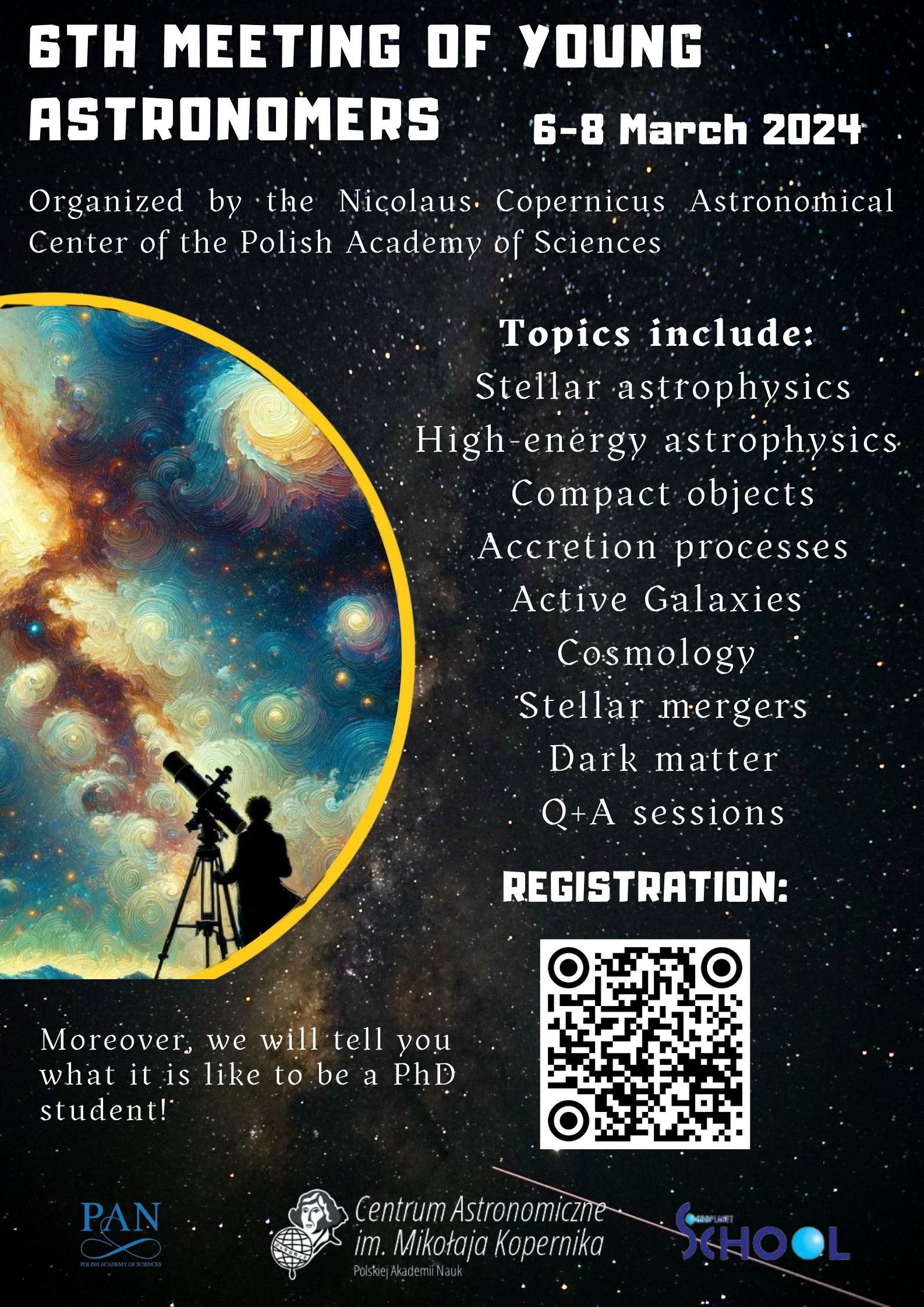The 6th Young Astronomers Meeting at CAMK-PAN
Lecture Hall (Hybrid)
Recruitment 2024/2025 is open for applications!
Nicolaus Copernicus Astronomical Center invites applications for astronomy and astrophysics PhD studies
For more information: Recruitment
Nicolaus Copernicus Astronomical Center Polish Academy of Sciences is a leading astronomical institute in Poland established in 1978.
The main subjects of research include:
- Stellar astrophysics
- Binary systems
- Cosmic distance scale
- Dense matter and neutron stars
- Black holes
- Accretion processes
- Structure and evolution of active galaxies
- Gravitational waves
- Cosmology
- Dark matter
Astronomers from the Nicolaus Copernicus Astronomical Center are involved in a number of major international observational projects such as H.E.S.S., CTA (observations of ultra high energy photons (TeV) via detection of Cherenkov radiation), Herschel (satellite observations in IR domain), SALT (Southern African Large Telescope), INTEGRAL, Fermi (satellite observations of gamma rays), LIGO-Virgo-KAGRA (detection of gravitational waves). DarkSide collaboraton (Searching for Dark matter), the Araucaria Project (improving the calibration of the cosmic distance scale in the local universe) and Project SOLARIS (search for extrasolar planetary systems), financed in part by the European Research Council (Starting Independent Researcher Grant).
Important information:
- The meeting will be in a hybrid format (both on-site and on the Zoom platform) and participation is free of charge.
- The abstracts (poster and talk) should be sent to young.astro.meeting@camk.edu.pl by 1st of March, 2024.
- Limited on-site participation slots and limited accommodations for participants who want to join in person from outside of Warsaw. Please register by the 1st of March for on-site participation.
- The registration for Online participants is extended till the 5th of March.
- Please send an email to young.astro.meeting@camk.edu.pl for the accommodation request.
Research at CAMK (Youtube)
Develop your career at CAMK (Youtube)

